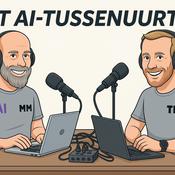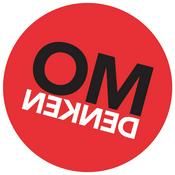225 afleveringen

ELO Ratings Questions
18-9-2025 | 3 Min.
Key ArgumentThesis: Using ELO for AI agent evaluation = measuring noiseProblem: Wrong evaluators, wrong metrics, wrong assumptions Solution: Quantitative assessment frameworksThe Comparison (00:00-02:00)Chess ELOFIDE arbiters: 120hr trainingBinary outcome: win/lossTest-retest: r=0.95Cohen's κ=0.92AI Agent ELORandom users: Google engineer? CS student? 10-year-old?Undefined dimensions: accuracy? style? speed?Test-retest: r=0.31 (coin flip)Cohen's κ=0.42Cognitive Bias Cascade (02:00-03:30)Anchoring: 34% rating variance in first 3 secondsConfirmation: 78% selective attention to preferred featuresDunning-Kruger: d=1.24 effect sizeResult: Circular preferences (A>B>C>A)The Quantitative Alternative (03:30-05:00)Objective MetricsMcCabe complexity ≤20Test coverage ≥80%Big O notation comparisonSelf-admitted technical debtReliability: r=0.91 vs r=0.42Effect size: d=2.18Dream Scenario vs Reality (05:00-06:00)DreamWorld's best engineersAnnotated metricsStandardized criteriaReality Random internet usersNo expertise verificationSubjective preferencesKey StatisticsMetricChessAI AgentsInter-rater reliabilityκ=0.92κ=0.42Test-retestr=0.95r=0.31Temporal drift±10 pts±150 ptsHurst exponent0.890.31TakeawaysStop: Using preference votes as quality metricsStart: Automated complexity analysisROI: 4.7 months to break evenCitations MentionedKapoor et al. (2025): "AI agents that matter" - κ=0.42 findingSantos et al. (2022): Technical Debt Grading validationRegan & Haworth (2011): Chess arbiter reliability κ=0.92Chapman & Johnson (2002): 34% anchoring effectQuotable Moments"You can't rate chess with basketball fans""0.31 reliability? That's a coin flip with extra steps""Every preference vote is a data crime""The psychometrics are screaming"ResourcesTechnical Debt Grading (TDG) FrameworkPMAT (Pragmatic AI Labs MCP Agent Toolkit)McCabe Complexity CalculatorCohen's Kappa Calculator 🔥 Hot Course Offers:🤖 Master GenAI Engineering - Build Production AI Systems🦀 Learn Professional Rust - Industry-Grade Development📊 AWS AI & Analytics - Scale Your ML in Cloud⚡ Production GenAI on AWS - Deploy at Enterprise Scale🛠️ Rust DevOps Mastery - Automate Everything🚀 Level Up Your Career:💼 Production ML Program - Complete MLOps & Cloud Mastery🎯 Start Learning Now - Fast-Track Your ML Career🏢 Trusted by Fortune 500 TeamsLearn end-to-end ML engineering from industry veterans at PAIML.COM

The 2X Ceiling: Why 100 AI Agents Can't Outcode Amdahl's Law"
17-9-2025 | 4 Min.
AI coding agents face the same fundamental limitation as parallel computing: Amdahl's Law. Just as 10 cooks can't make soup 10x faster, 10 AI agents can't code 10x faster due to inherent sequential bottlenecks.📚 Key ConceptsThe Soup AnalogyMultiple cooks can divide tasks (prep, boiling water, etc.)But certain steps MUST be sequential (can't stir before ingredients are in)Adding more cooks hits diminishing returns quicklyPerfect metaphor for parallel processing limitsAmdahl's Law ExplainedMathematical principle: Speedup = 1 / (Sequential% + Parallel%/N)Logarithmic relationship = rapid plateauSequential work becomes the hard ceilingEven infinite workers can't overcome sequential bottlenecks💻 Traditional Computing BottlenecksI/O Operations - disk reads/writesNetwork calls - API requests, database queries Database locks - transaction serializationCPU waiting - can't parallelize waitingResult: 16 cores ≠ 16x speedup in real world🤖 Agentic Coding Reality: The New Bottlenecks1. Human Review (The New I/O)Code must be understood by humansSecurity validation requiredBusiness logic verificationCan't parallelize human cognition2. Production DeploymentSequential by natureOne deployment at a timeRollback requirementsCompliance checks3. Trust BuildingCan't parallelize reputationBad code = deleted customer dataRevenue impact risksTrust accumulates sequentially4. Context LimitsHuman cognitive bandwidthUnderstanding 100k+ lines of codeMental model limitationsCommunication overhead📊 The Numbers (Theoretical Speedups)1 agent: 1.0x (baseline)2 agents: ~1.3x speedup10 agents: ~1.8x speedup 100 agents: ~1.96x speedup∞ agents: ~2.0x speedup (theoretical maximum)🔑 Key TakeawaysAI Won't Fully Automate Coding JobsMore like enhanced assistants than replacementsHuman oversight remains criticalTrust and context are irreplaceableEfficiency Gains Are LimitedReal-world ceiling around 2x improvementNot the exponential gains often promisedSimilar to other parallelization effortsSuccess Factors for Agentic CodingWell-organized human-in-the-loop processesClear review and approval workflowsIncremental trust buildingRealistic expectations🔬 Research ReferencesPrinceton AI research on agent limitations"AI Agents That Matter" paper findingsEmpirical evidence of diminishing returnsReal-world case studies💡 Practical ImplicationsFor Developers:Focus on optimizing the human review processBuild better UI/UX for code reviewImplement incremental deployment strategiesFor Organizations:Set realistic productivity expectationsInvest in human-agent collaboration toolsDon't expect 10x improvements from more agentsFor the Industry:Paradigm shift from "replacement" to "augmentation"Need for new metrics beyond raw speedFocus on quality over quantity of agents🎬 Episode StructureHook: The soup cooking analogyTheory: Amdahl's Law explanationTraditional: Computing bottlenecksModern: Agentic coding bottlenecksReality Check: The 2x ceilingFuture: Optimizing within constraints🗣️ Quotable Moments"10 agents don't code 10 times faster, just like 10 cooks don't make soup 10 times faster""Humans are the new I/O bottleneck""You can't parallelize trust""The theoretical max is 2x faster - that's the reality check"🤔 Discussion QuestionsIs the 2x ceiling permanent or can we innovate around it?What's more valuable: speed or code quality?How do we optimize the human bottleneck?Will future AI models change these limitations?📝 Episode Tagline"When infinite AI agents hit the wall of human review, Amdahl's Law reminds us that some things just can't be parallelized - including trust, context, and the courage to deploy to production." 🔥 Hot Course Offers:🤖 Master GenAI Engineering - Build Production AI Systems🦀 Learn Professional Rust - Industry-Grade Development📊 AWS AI & Analytics - Scale Your ML in Cloud⚡ Production GenAI on AWS - Deploy at Enterprise Scale🛠️ Rust DevOps Mastery - Automate Everything🚀 Level Up Your Career:💼 Production ML Program - Complete MLOps & Cloud Mastery🎯 Start Learning Now - Fast-Track Your ML Career🏢 Trusted by Fortune 500 TeamsLearn end-to-end ML engineering from industry veterans at PAIML.COM

Plastic Shamans of AGI
21-5-2025 | 10 Min.
The plastic shamans of OpenAI 🔥 Hot Course Offers: - 🤖 Master GenAI Engineering - Build Production AI Systems - 🦀 Learn Professional Rust - Industry-Grade Development - 📊 AWS AI & Analytics - Scale Your ML in Cloud - ⚡ Production GenAI on AWS - Deploy at Enterprise Scale - 🛠️ Rust DevOps Mastery - Automate Everything 🚀 Level Up Your Career: - 💼 Production ML Program - Complete MLOps & Cloud Mastery - 🎯 Start Learning Now - Fast-Track Your ML Career - 🏢 Trusted by Fortune 500 Teams Learn end-to-end ML engineering from industry veterans at PAIML.COM

The Toyota Way: Engineering Discipline in the Era of Dangerous Dilettantes
21-5-2025 | 14 Min.
Dangerous Dilettantes vs. Toyota Way EngineeringCore ThesisThe influx of AI-powered automation tools creates dangerous dilettantes - practitioners who know just enough to be harmful. The Toyota Production System (TPS) principles provide a battle-tested framework for integrating automation while maintaining engineering discipline.Historical ContextToyota Way formalized ~2001DevOps principles derive from TPSCoincided with post-dotcom crash startupsDecades of manufacturing automation parallels modern AI-based automationDangerous Dilettante IndicatorsPromises magical automation without understanding systemsFocuses on short-term productivity gains over long-term stabilityCreates interfaces that hide defects rather than surfacing themLacks understanding of production engineering fundamentalsPrioritizes feature velocity over deterministic behaviorToyota Way Implementation for AI-Enhanced Development1. Long-Term Philosophy Over Short-Term Gains// Anti-pattern: Brittle automation scriptlet quick_fix = agent.generate_solution(problem, { optimize_for: "immediate_completion", validation: false});// TPS approach: Sustainable system designlet sustainable_solution = engineering_system .with_agent_augmentation(agent) .design_solution(problem, { time_horizon_years: 2, observability: true, test_coverage_threshold: 0.85, validate_against_principles: true });Build systems that remain maintainable across yearsEstablish deterministic validation criteria before implementationOptimize for total cost of ownership, not just initial development2. Create Continuous Process Flow to Surface ProblemsImplement CI pipelines that surface defects immediately:Static analysis validationType checking (prefer strong type systems)Property-based testingIntegration testsPerformance regression detectionBuild flow:make lint → make typecheck → make test → make integration → make benchmarkFail fast at each stageForce errors to surface early rather than be hidden by automationAgent-assisted development must enhance visibility, not obscure it3. Pull Systems to Prevent OverproductionMinimize code surface area - only implement what's neededPrefer refactoring to adding new abstractionsUse agents to eliminate boilerplate, not to generate speculative features// Prefer minimal implementationsfunction processData(data: T[]): Result { // Use an agent to generate only the exact transformation needed // Not to create a general-purpose framework}4. Level Workload (Heijunka)Establish consistent development velocityAvoid burst patterns that hide technical debtUse agents consistently for small tasks rather than large sporadic generations5. Build Quality In (Jidoka)Automate failure detection, not just productionAny failed test/lint/check = full system haltEvery team member empowered to "pull the andon cord" (stop integration)AI-assisted code must pass same quality gates as human codeQuality gates should be more rigorous with automation, not less6. Standardized Tasks and ProcessesUniform build system interfaces across projectsConsistent command patterns:make formatmake lintmake testmake deployStandardized ways to integrate AI assistanceDocumented patterns for human verification of generated code7. Visual Controls to Expose ProblemsDashboards for code coverageComplexity metricsDependency trackingPerformance telemetryUse agents to improve these visualizations, not bypass them8. Reliable, Thoroughly-Tested TechnologyPrefer languages with strong safety guarantees (Rust, OCaml, TypeScript over JS)Use static analysis tools (clippy, eslint)Property-based testing over example-based#[test]fn property_based_validation() { proptest!(|(input: Vec)| { let result = process(&input); // Must hold for all inputs assert!(result.is_valid_state()); });}9. Grow Leaders Who Understand the WorkEngineers must understand what agents produceNo black-box implementationsLeaders establish a culture of comprehension, not just completion10. Develop Exceptional TeamsUse AI to amplify team capabilities, not replace expertiseAgents as team members with defined responsibilitiesCross-training to understand all parts of the system11. Respect Extended Network (Suppliers)Consistent interfaces between systemsWell-documented APIsVersion guaranteesExplicit dependencies12. Go and See (Genchi Genbutsu)Debug the actual system, not the abstractionTrace problematic code pathsVerify agent-generated code in contextSet up comprehensive observability// Instrument code to make the invisible visiblefunc ProcessRequest(ctx context.Context, req *Request) (*Response, error) { start := time.Now() defer metrics.RecordLatency("request_processing", time.Since(start)) // Log entry point logger.WithField("request_id", req.ID).Info("Starting request processing") // Processing with tracing points // ... // Verify exit conditions if err != nil { metrics.IncrementCounter("processing_errors", 1) logger.WithError(err).Error("Request processing failed") } return resp, err}13. Make Decisions Slowly by ConsensusMulti-stage validation for significant architectural changesAutomated analysis paired with human reviewDesign documents that trace requirements to implementation14. Kaizen (Continuous Improvement)Automate common patterns that emergeRegular retrospectives on agent usageContinuous refinement of prompts and integration patternsTechnical Implementation PatternsAI Agent Integrationinterface AgentIntegration { // Bounded scope generateComponent(spec: ComponentSpec): Promise; // Surface problems validateGeneration(code: string): Promise; // Continuous improvement registerFeedback(generation: string, feedback: Feedback): void;}Safety Control SystemsRate limitingProgressive exposureSafety boundariesFallback mechanismsManual oversight thresholdsExample: CI Pipeline with Agent Integration# ci-pipeline.ymlstages: - lint - test - integrate - deploylint: script: - make format-check - make lint # Agent-assisted code must pass same checks - make ai-validation test: script: - make unit-test - make property-test - make coverage-report # Coverage thresholds enforced - make coverage-validation# ...ConclusionAgents provide useful automation when bounded by rigorous engineering practices. The Toyota Way principles offer proven methodology for integrating automation without sacrificing quality. The difference between a dangerous dilettante and an engineer isn't knowledge of the latest tools, but understanding of fundamental principles that ensure reliable, maintainable systems. 🔥 Hot Course Offers:🤖 Master GenAI Engineering - Build Production AI Systems🦀 Learn Professional Rust - Industry-Grade Development📊 AWS AI & Analytics - Scale Your ML in Cloud⚡ Production GenAI on AWS - Deploy at Enterprise Scale🛠️ Rust DevOps Mastery - Automate Everything🚀 Level Up Your Career:💼 Production ML Program - Complete MLOps & Cloud Mastery🎯 Start Learning Now - Fast-Track Your ML Career🏢 Trusted by Fortune 500 TeamsLearn end-to-end ML engineering from industry veterans at PAIML.COM

DevOps Narrow AI Debunking Flowchart
16-5-2025 | 11 Min.
Extensive Notes: The Truth About AI and Your Coding JobTypes of AINarrow AINot truly intelligentPattern matching and full text searchExamples: voice assistants, coding autocompleteUseful but contains bugsMultiple narrow AI solutions compound bugsGet in, use it, get out quicklyAGI (Artificial General Intelligence)No evidence we're close to achieving thisMay not even be possibleWould require human-level intelligenceNeeds consciousness to existConsciousness: ability to recognize what's happening in environmentNo concept of this in narrow AI approachesPure fantasy and magical thinkingASI (Artificial Super Intelligence)Even more fantasy than AGINo evidence at all it's possibleMore science fiction than realityThe DevOps Flowchart TestCan you explain what DevOps is?If no → You're incompetent on this topicIf yes → Continue to next questionDoes your company use DevOps?If no → You're inexperienced and a magical thinkerIf yes → Continue to next questionWhy would you think narrow AI has any form of intelligence?Anyone claiming AI will automate coding jobs while understanding DevOps is likely:A magical thinkerUnaware of scientific processA grifterWhy DevOps MattersProven methodology similar to Toyota WayBased on continuous improvement (Kaizen)Look-and-see approach to reducing defectsConstantly improving build systems, testing, lintingNo AI component other than basic statistical analysisFeedback loop that makes systems betterThe Reality of Job AutomationPeople who do nothing might be eliminatedNot AI automating a job if they did nothingWorkers who create negative valuePeople who create bugs at 2AMTheir elimination isn't AI automationMeasuring Software QualityHigh churn files correlate with defectsConstant changes to same file indicate not knowing what you're doingDevOps patterns help identify issues through:Tracking file changesMeasuring complexityCode coverage metricsDeployment frequencyConclusionVery early stages of combining narrow AI with DevOpsNarrow AI tools are useful but limitedNeed to look beyond magical thinkingOpinions don't matter if you:Don't understand DevOpsDon't use DevOpsClaim to understand DevOps but believe narrow AI will replace developersRaw AssessmentIf you don't understand DevOps → Your opinion doesn't matterIf you understand DevOps but don't use it → Your opinion doesn't matterIf you understand and use DevOps but think AI will automate coding jobs → You're likely a magical thinker or grifter 🔥 Hot Course Offers:🤖 Master GenAI Engineering - Build Production AI Systems🦀 Learn Professional Rust - Industry-Grade Development📊 AWS AI & Analytics - Scale Your ML in Cloud⚡ Production GenAI on AWS - Deploy at Enterprise Scale🛠️ Rust DevOps Mastery - Automate Everything🚀 Level Up Your Career:💼 Production ML Program - Complete MLOps & Cloud Mastery🎯 Start Learning Now - Fast-Track Your ML Career🏢 Trusted by Fortune 500 TeamsLearn end-to-end ML engineering from industry veterans at PAIML.COM
Meer Onderwijs podcasts
Trending Onderwijs -podcasts
Over 52 Weeks of Cloud
Luister naar 52 Weeks of Cloud, Omdenken Podcast en vele andere podcasts van over de hele wereld met de radio.net-app

Ontvang de gratis radio.net app
- Zenders en podcasts om te bookmarken
- Streamen via Wi-Fi of Bluetooth
- Ondersteunt Carplay & Android Auto
- Veel andere app-functies
Ontvang de gratis radio.net app
- Zenders en podcasts om te bookmarken
- Streamen via Wi-Fi of Bluetooth
- Ondersteunt Carplay & Android Auto
- Veel andere app-functies


52 Weeks of Cloud
download de app,
luisteren.






































